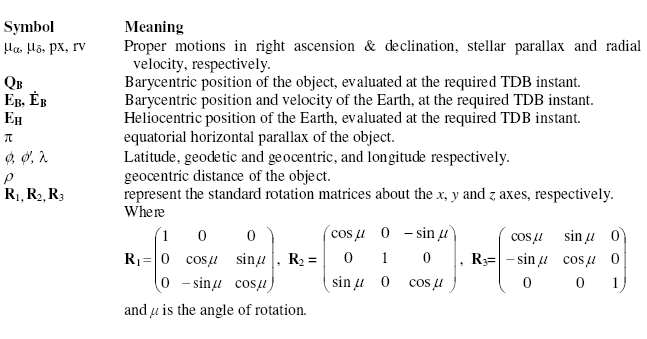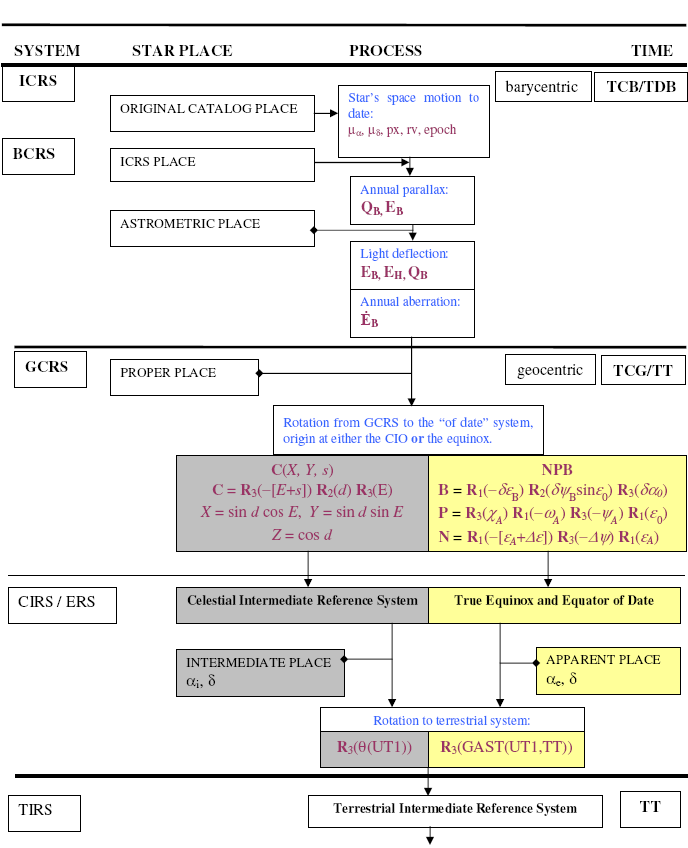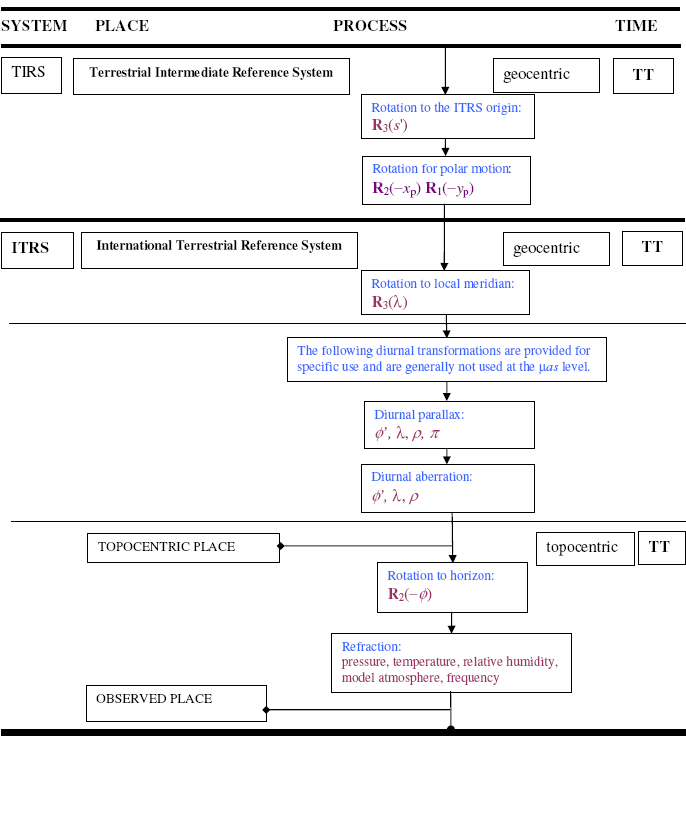 |
|
CHART: TRANSFORMATION FROM ICRS
TO OBSERVED PLACES OF STARS
TO OBSERVED PLACES OF STARS
The aim is to highlight the CIO and Equinox based approaches and to specify in what order to apply
the usual corrections (annual aberration, precession-nutation etc.) when predicting apparent star
directions for a ground-based observer. In typical cases the BCRS to GCRS portion of the method,
using existing annual aberration and light deflection formulations, is accurate to a small fraction of a
milliarcsecond. However, the omission of light deflection by the planets could in extreme cases cause
errors approaching 20 milliarcseconds and there are various other missing terms at the submilliarcsecond
level.
For very precise reductions it is necessary to use a fully GR-based approach: for more details, see IERS Conventions 2003 (Chapter 11), Klioner 2003, or Kaplan 1998. Note also that the transformation from the ITRS to observed place set out in the chart would require more complicated steps in the GR framework to achieve microarcsecond accuracy. Similarly, in demanding interferometer applications such as VLBI the geometry of the baselines requires a fully relativistic treatment.
The chart summarizes the system, and the elements that are associated with that system, i.e. the name for the positions (place), the processes/corrections, the origin to which the coordinates are referred, and the time scale to use. In particular the blue type in the box in the “Process” column is the operation/correction to be applied, and the purple type indicates the quantities required for that process. CIO and equinox based processes are indicated using grey and yellow shading, respectively.
The following symbols, which are used only in the Chart and are defined below.
For very precise reductions it is necessary to use a fully GR-based approach: for more details, see IERS Conventions 2003 (Chapter 11), Klioner 2003, or Kaplan 1998. Note also that the transformation from the ITRS to observed place set out in the chart would require more complicated steps in the GR framework to achieve microarcsecond accuracy. Similarly, in demanding interferometer applications such as VLBI the geometry of the baselines requires a fully relativistic treatment.
The chart summarizes the system, and the elements that are associated with that system, i.e. the name for the positions (place), the processes/corrections, the origin to which the coordinates are referred, and the time scale to use. In particular the blue type in the box in the “Process” column is the operation/correction to be applied, and the purple type indicates the quantities required for that process. CIO and equinox based processes are indicated using grey and yellow shading, respectively.
The following symbols, which are used only in the Chart and are defined below.

IAU NFA WG: Chart (July 2006)


BACK